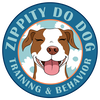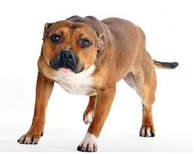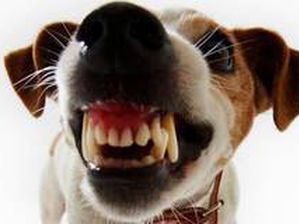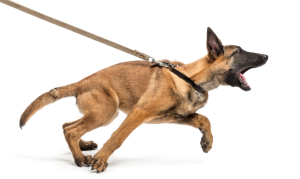Reactive Dog and Behavioral Training
Humane Training Informed by Science
In order to offer the highest level of service and attention, for owners of dogs with problem, or severe behavior issues, the number of cases accepted per month is limited.
BEFORE FILLING OUT A BEHAVIOR FORM
verify that you are in a location which we service
Behavioral issues such as Aggression Cases, Dog-to-Dog Reactivity, Leash Reactivity, and Resource Guarding, all require a $125.00, non-refundable in-home consultation and assessment first, before training can begin. No Exceptions. Taking an accurate behavioral history of a dog enables a clear understanding of what the dog’s pathology is and how to address it accurately and appropriately. This includes a professional follow-up report with a comprehensive training plan that is non-negotiable. In other words, you can't pick and choose what parts of the plan you want, because it is a coordinated approach using integrated methods to achieve the best outcome.
Required: Reactive Dog and Behavior Issues Form
If you have a dog with a "bite" history to a human, or a dog who will likely bite a stranger, they will require the use of a muzzle before working with them can begin. This keeps both dog and human safe, while working in the home, as well as, open community environments.
The Muzzle-Up Project
Baskerville
BUMAS
BEFORE FILLING OUT A BEHAVIOR FORM
verify that you are in a location which we service
Behavioral issues such as Aggression Cases, Dog-to-Dog Reactivity, Leash Reactivity, and Resource Guarding, all require a $125.00, non-refundable in-home consultation and assessment first, before training can begin. No Exceptions. Taking an accurate behavioral history of a dog enables a clear understanding of what the dog’s pathology is and how to address it accurately and appropriately. This includes a professional follow-up report with a comprehensive training plan that is non-negotiable. In other words, you can't pick and choose what parts of the plan you want, because it is a coordinated approach using integrated methods to achieve the best outcome.
Required: Reactive Dog and Behavior Issues Form
If you have a dog with a "bite" history to a human, or a dog who will likely bite a stranger, they will require the use of a muzzle before working with them can begin. This keeps both dog and human safe, while working in the home, as well as, open community environments.
The Muzzle-Up Project
Baskerville
BUMAS
What is REACTIVITY
Reavtivity is simply an over-reactive response to something in the environment. Not all over-reactivity is created equal, there are different types of over-reactivity and varying degrees. Over-reactivity effects dogs of all ages, size breeds and mixes. It is not breed specific; however, a dog’s genetic code does influence the likelihood of these responses, as does their learning history, environment they live in or have lived in, and their sense of self (autonomy). Dogs can have one trigger, or many triggers. Some dogs react to things, while others react to people, places, sounds, and even smells.
Reavtivity is simply an over-reactive response to something in the environment. Not all over-reactivity is created equal, there are different types of over-reactivity and varying degrees. Over-reactivity effects dogs of all ages, size breeds and mixes. It is not breed specific; however, a dog’s genetic code does influence the likelihood of these responses, as does their learning history, environment they live in or have lived in, and their sense of self (autonomy). Dogs can have one trigger, or many triggers. Some dogs react to things, while others react to people, places, sounds, and even smells.
Why does it HAPPEN
There are several reasons why reactivity occurs; the most common being lack of socialization (exposure) as a puppy, often when combined with limited exposure to the environment, can result in a general fear of novel situations. Another is experiencing traumatic event, such as being attacked by another dog, or any other experience that the dog perceives as negative or frightening. In these cases, single events that create trauma, may cause a dog to develop a fear of other dogs, people, or the object they associate with the experience. Because dogs learn through association, in most cases reactive dogs are most of the time accidentally or intentionally created, this will be especially true if punishment training has been used to treat the problem behavior.
Some dogs exhibit mild, moderate to high reactive behaviors, while others don't behave aggressively at all, they may instead be just anxious, or overcautious. Alternatively, the opposite can occur with an-over-the-top exuberant greeter who wants to say "hi" to every person they see. Some dogs are only reactive while on a leash or behind a barrier. These types of reactions are often referred to as "leash reactivity" or "barrier frustration".
No matter how mild or severe your dog's over-reactivity happens to be, it can be embarrassing, frightening, and difficult to live with, but there is hope for dogs who struggle with these issues. It is important to understand though, there is no magic bullet and no “quick fix.” Counter Conditioning and Desensitization is the scientific process by which it is properly addressed. Quick fix punishment training will not ”correct” the problem, it will only suppress the behavior that will likely manifest in another way, or return altogether, and most of the time worse than before. That is where we can help you with a supported training, 1:1 instruction and guidance.
There are several reasons why reactivity occurs; the most common being lack of socialization (exposure) as a puppy, often when combined with limited exposure to the environment, can result in a general fear of novel situations. Another is experiencing traumatic event, such as being attacked by another dog, or any other experience that the dog perceives as negative or frightening. In these cases, single events that create trauma, may cause a dog to develop a fear of other dogs, people, or the object they associate with the experience. Because dogs learn through association, in most cases reactive dogs are most of the time accidentally or intentionally created, this will be especially true if punishment training has been used to treat the problem behavior.
Some dogs exhibit mild, moderate to high reactive behaviors, while others don't behave aggressively at all, they may instead be just anxious, or overcautious. Alternatively, the opposite can occur with an-over-the-top exuberant greeter who wants to say "hi" to every person they see. Some dogs are only reactive while on a leash or behind a barrier. These types of reactions are often referred to as "leash reactivity" or "barrier frustration".
No matter how mild or severe your dog's over-reactivity happens to be, it can be embarrassing, frightening, and difficult to live with, but there is hope for dogs who struggle with these issues. It is important to understand though, there is no magic bullet and no “quick fix.” Counter Conditioning and Desensitization is the scientific process by which it is properly addressed. Quick fix punishment training will not ”correct” the problem, it will only suppress the behavior that will likely manifest in another way, or return altogether, and most of the time worse than before. That is where we can help you with a supported training, 1:1 instruction and guidance.
The PROCESS
The goal of behavior modification is to help dogs who have-fear based issues toward other dogs, people, and/or things (environmental triggers such as cars, trucks, bikes, scooters, etc.). Additionally, the same methods can be used to help the dog who gets easily over stimulated and struggles to stay calm around other dogs and people; you know the exuberant greeter, the dog who wants to say ‘hello’ to everyone or every dog they see. We do this through a process called counter conditioning which is about changing associations for the dog.
The reason this process is called counter conditioning, rather than simply conditioning, is because the dog already has an established Conditioned Emotional Response CER, (and it is most often an unpleasant one), to the "thing" that worries them (trigger(s)). In this process we’re trying to counter that CER by establishing and replacing it with a pleasant Conditioned Emotional Response. The goal for a dog who is uneasy around strangers or other dogs, is to learn that their presence, proximity and maybe later, if possible, contact, actually predict their favorite food. We do this using novel high value foods. Whatever the dog’s trigger is; there must be a predictive relationship between the food when the trigger appears. If food is not being used for counter-conditioning, then counter-conditioning in this context, is probably not going to be achieved. Punitive training methods do not change a dogs emotional state, other than to drive the fear deeper.
The goal of behavior modification is to help dogs who have-fear based issues toward other dogs, people, and/or things (environmental triggers such as cars, trucks, bikes, scooters, etc.). Additionally, the same methods can be used to help the dog who gets easily over stimulated and struggles to stay calm around other dogs and people; you know the exuberant greeter, the dog who wants to say ‘hello’ to everyone or every dog they see. We do this through a process called counter conditioning which is about changing associations for the dog.
The reason this process is called counter conditioning, rather than simply conditioning, is because the dog already has an established Conditioned Emotional Response CER, (and it is most often an unpleasant one), to the "thing" that worries them (trigger(s)). In this process we’re trying to counter that CER by establishing and replacing it with a pleasant Conditioned Emotional Response. The goal for a dog who is uneasy around strangers or other dogs, is to learn that their presence, proximity and maybe later, if possible, contact, actually predict their favorite food. We do this using novel high value foods. Whatever the dog’s trigger is; there must be a predictive relationship between the food when the trigger appears. If food is not being used for counter-conditioning, then counter-conditioning in this context, is probably not going to be achieved. Punitive training methods do not change a dogs emotional state, other than to drive the fear deeper.
The TRAINING
In this training you will learn how to manage the environment to avoid confrontational situations, how to prepare for the unexpected, so when faced with situations beyond your control , you can still set your dog up for success. You will learn:
In this training you will learn how to manage the environment to avoid confrontational situations, how to prepare for the unexpected, so when faced with situations beyond your control , you can still set your dog up for success. You will learn:
- Good leash mechanics during the training process
- Teaching you to recognize when your dog is stressed, and how to keep them under threshold
- Teach your dog incompatible (default behavior) and
- Inserting those incompatible (default) behaviors in place of the aggressive ones
- Desensitizing your dog to the stress of a tight leash
- Teaching your dog to acknowledge their trigger without reacting
- Teaching your dog to remain calm in the presence of other dogs (and humans)
- Helping you to feel confident you can handle everyday situations where you and your dog might encounter other dogs
- Giving you the tools and self-confidence, you need to remain calm, so your dog can






